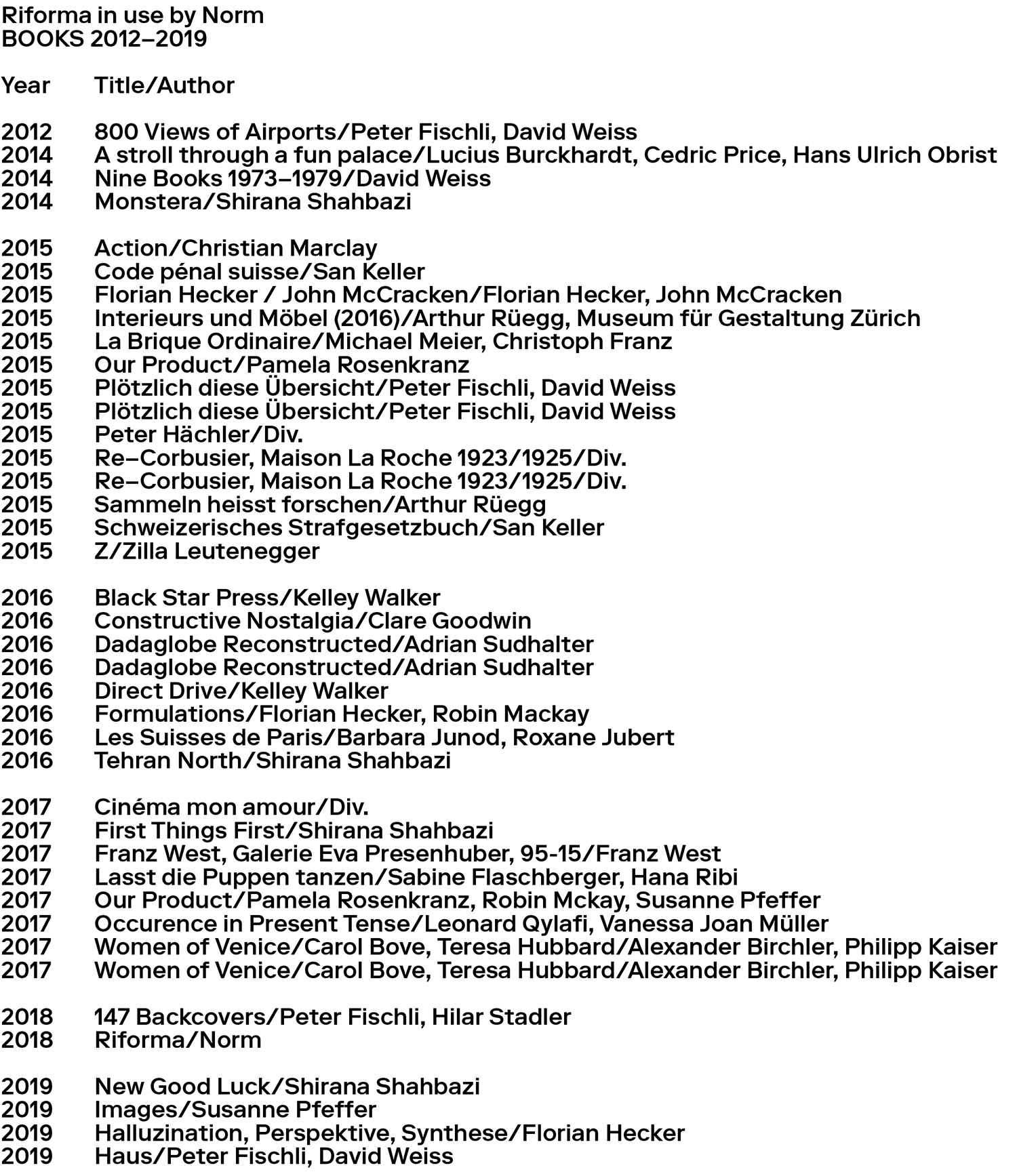






Riforma Specimen, 2018
Envelope, Letter, Slides
I Situation
While travelling through the north of Italy in the summer of 2011, we visited a small second-hand bookshop somewhere between Modena and Milan, where we discovered a stack of books relating to graphic design, a couple of Italian type specimen, and a near-complete set of the Enciclopedia della stampa. Once back home, we discovered a bland-looking envelope between the Aggiornamento n. 9 (entitled Immagine coordinata, ‘Corporate identity’) and n. 12 (Schemario d’impaginazione, ‘Layout systems’). It contained four plastic sleeves holding fourteen 35 mm colour reversal film slides and a typewritten note. Looking at the images and reading the note, it became clear that these slides were documenting an elaborate corporate design project for an Italian company by the name of Italcore.
Ⅱ Observations
Envelope
A large-sized, orange envelope labelled DOCUMENTI (‘Documents’) on a white self-adhesive sticker, written with a mechanical typewriter.
Letter
An A4-sized, blue carbon-copy duplicate note written with the same mechanical typewriter. The text translates as follows:
Milan, June 5 1972, Dear Giancarlo, As agreed, I’m sending you the film slides of the presentation boards, we’ll keep the originals. As you know, our problems are still not resolved, but I’m optimistic: the plan to reform the group is in progress, and we see good prospects for the future. However, it’s unlikely they will take a decision before the end of summer. For this reason, I kindly ask you to keep the project confidential for now. As soon as I have news, I’ll be sure to contact you. It goes without saying that the quality of your work is indisputable and that the whole company is grateful to you. Best regards and speak soon, Raniero
Slides
The fourteen colour slides show reproductions of a series of presentation boards on a neutral background. Each board is hole-punched four times, with the holes being reinforced with rings. Considering the quantity, distance and dimension of the holes, we can deduct that the original boards were most probably A3 in size. Each board displays a variety of technical drawings, illustrations, symbols, layout guidelines and type composition systems, with visualisations ranging from simple to very detailed. All readable text and information is written in Italian. All transparencies are mounted in white plastic frames (50 × 50 mm). The brand name Ferrania and the inscription Made in Italy are embossed on their reverse side [cover]. The films are in good condition with few scratches, some dust, but show partial colour deterioration and fading. The frames show some signs of ageing. The colour slides document parts of an elaborately produced project presentation, individually showing a number of presentation boards. The reproduced boards are originally printed in three spot colours (green, red and black) on white paper. The four transparent plastic sleeves contain a total of 24 slides, with each sleeve containing six slides. We identify two numbering systems: one for the slides and one for the illustrations on the boards. The slides are hand-numbered on each plastic frame. The numbers correspond with the three-dimensional green numbers placed next to each board. The illustrations on the boards are numbered following an inherent logic. By analysing the two different numbering systems (which are obviously not directly connected), we can deduct that at least 10 slides are missing, corresponding to the vacant spaces of the plastic sleeves. High resolution scans were made of each transparency to obtain a more detailed view. Larger, digitally restored and enhanced reproductions of each slide are displayed on pp. 14–27. (cf. p. 28, slides in their original state and size).
For III Assumptions and IV Conclusion cf. Riforma Specimen
Excerpt from: Riforma Type Specimen
© 2018 NORM, Zurich & Lineto GmbH
Slides 2, 4, 5, 6 (detail), 9, 15
Slide 15 (details)
Slide 13 (details)
Slides 17
« LL Riforma Mono Specimen »






























